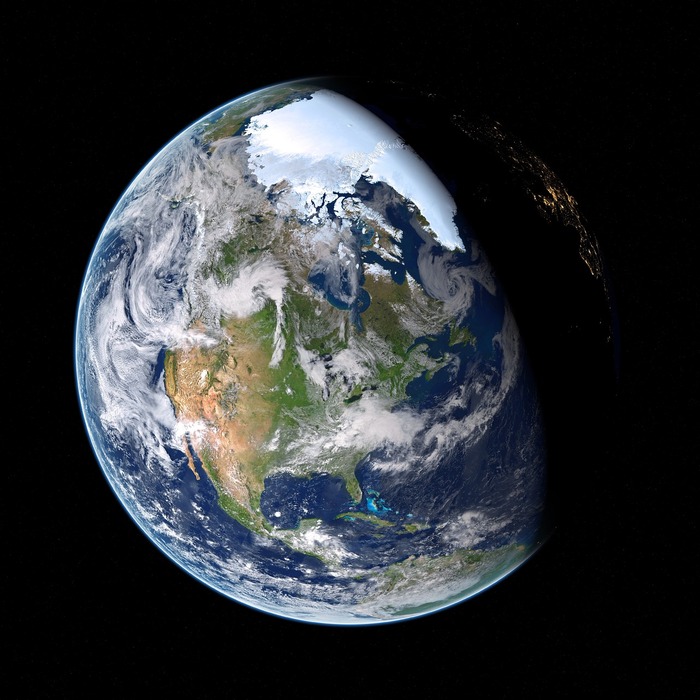The melting ice sheet of Greenland has already caused the global sea level to rise by 1.06 centimeters since 1992. This is shown by a study based on 26 different satellite measurements. A group of 96 scientists from 50 international organizations evaluated the data and published the results in the journal Nature.
From 1992 to 2018, about 3,800 billion tons of ice have melted in Greenland and flowed into the sea. If the trend continues, the melting Greenland ice could contribute to floods worldwide by 2100, which hit hundreds of millions of people.
Researchers led by Andrew Shepherd of the University of Leeds in the UK have determined, among other things, the height of glaciers in Greenland and their flow velocity. In mathematical models, they then determined how the ice melt affects the overall stability of the Greenland ice sheet. According to the researchers, this is the most complete picture of Greenland ice loss so far.
Ian Joughin / University of Washington / dpa
The entire Greenland ice could raise the sea level by 7.4 meters
The series of measurements show the changes in the ice since the beginning of the 1990s in detail:
- Accordingly, from 1992 to 1997, about 18 billion tons of ice flowed into the sea each year.
- Between 2012 and 2017, the figure was 239 billion tons per annum - about 13 times as much as at the beginning of the series.
- In between, the rate was even higher, peaking in 2011, when 335 billion tons of ice melted away.
Changes in air pressure conditions over the North Atlantic have weakened the loss since 2012, write Shepherd and colleagues.
20 centimeters sea level rise solely by melt in Greenland
About 52 percent of ice loss, according to the study, is due to the fact that ice has melted on the surface of the glacier. The remaining 48 percent were lost because the flow of glaciers had increased and thus larger amounts of ice have entered the sea, the researchers said.
more on the subject
The melt corresponds to scenarios predicted by the Intergovernmental Panel on Climate Change (IPCC) in the event of a rapid global temperature rise. With ongoing development, the melting Greenland ice might contribute to sea level rise by about 20 centimeters by 2100, the team writes.
"According to current trends, the melting of ice in Greenland at the end of the century will cause floods to affect 100 million people each year," says Shepherd. Considering the ice loss in the Antarctic, it could even be 400 million.
The Greenland ice barely equals about twelve percent of the Antarctic ice, but melts faster. If all ice from Greenland disappeared, the world's sea level would be 7.40 meters higher.
Ice loss in the region could soon increase again. The lead author of the next IPCC report, Guðfinna Aðalgeirsdóttir from the University of Iceland, has observed a greater melting of glaciers in her homeland this summer than in previous years. "I expect a similar increase in mass loss in Greenland," she says.






